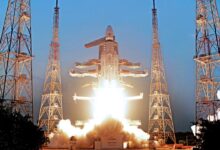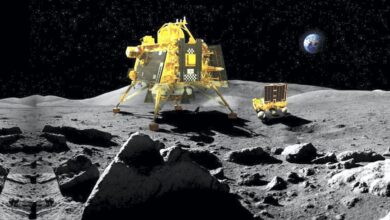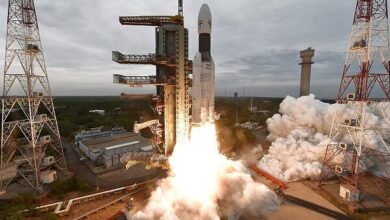Cabinet Approves Chandrayaan-4, Venus Mission, Indian Space Station, And Next-Gen Launch Vehicle, Providing A Significant Boost To ISRO

- The Cabinet has authorised the development of the initial module of the Bharatiya Antariksh Station (BAS-1) and missions to verify technologies for the construction and operation of BAS.
- The Gaganyaan program will be updated to incorporate these new developments and additional requirements, with an emphasis on the completion of eight missions by December 2028.
The Union Cabinet granted approval to Chandrayaan-4, the subsequent phase following the successful landing of the lander and rover on the Moon by Chandrayaan-3, on Wednesday.
In addition, the Cabinet approved the Venus orbiter mission plan, the development of an Indian space station, and the next-generation launch vehicle development, according to Union Minister Ashwini Vaishnaw during a press briefing.
What is Chandrayaan-4?
The Chandrayaan-4 moon mission is designed to showcase and develop technologies for the return to Earth following a successful landing on the Moon. Additionally, lunar samples will be collected for analysis upon their return to Earth.
Chandrayaan-4 is anticipated to be completed within 36 months, with the development and launch being overseen by the Indian Space Research Organisation (ISRO).
The cost of the Chandrayaan-4 mission is expected to be ₹2,104.06 crore. This budget encompasses the development of spacecraft, the support of the deep space network, two LVM3 launches, and special tests.
The mission will facilitate India’s transition to self-sufficiency in technologies for lunar sample analysis and manned missions, with substantial contributions from Indian academic institutions and industries.
The Venus Orbiter Mission (VOM) will concentrate on scientific exploration in order to gain a more comprehensive understanding of the geology and atmosphere of Venus. This will be achieved by probing the planet’s thick atmosphere, which will generate a vast amount of scientific data.
The objective of the mission is to study the planet’s surface, subsurface, atmospheric processes, and the Sun’s influence on its atmosphere by orbiting Venus with a scientific spacecraft..
It is crucial to investigate Venus, as it is posited that it was once habitable in the same way as Earth. The launch of the mission is scheduled for March 2028.
ISRO will be responsible for the development and launch of the spacecraft. The Venus Orbiter Mission has a total budget of ₹1,236 crore, with ₹824 crore allocated to the spacecraft.
India intends to establish its own space station by 2028.
The Bharatiya Antariksh Station (BAS), India’s own space station for scientific research, was also approved by the Cabinet. At present, the International Space Station, which is operated by the United States, and Tiangong, which is operated by China, are the sole operational space stations.
The Cabinet has authorised the development of the initial module of the Bharatiya Antariksh Station (BAS-1) and missions to verify technologies for the construction and operation of BAS. The Gaganyaan program will be updated to incorporate these new developments and additional requirements, with an emphasis on the completion of eight missions by December 2028.
The Gaganyaan program, which was initially approved in December 2018, is designed to facilitate future Indian space exploration and to facilitate human spaceflight to Low Earth Orbit (LEO). It intends to operationalise Bharatiya Antariksh Station by 2035 and complete a crewed lunar mission by 2040.
ISRO’s revised Gaganyaan program has received a total of ₹20,193 crore in additional funding.






Facebook Comments